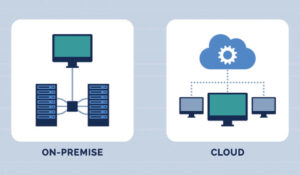We asked our panel about the key features to look out for when purchasing a cloud-based solution.
Being able to move agents in real time between routing groups
Your solution should enable you to move agents in real time between different skills-based routing groups or phone/email/webchat support, as well as retrieve call recordings and reports at the click of a button.
The platform should also be integrated and work seamlessly with all your telephony and communications for single-supplier end-to-end support – kept constantly up to date with new releases driven by multiple users of the system.
Visibility on all agents and activity should be available from one screen
The contact centre of today uses ‘hosted’ technology with no need for on-site hardware, supporting all inbound and outbound activity as well as workforce management in one.
By blending calls, email and webchat using a web interface and dashboard, visibility on all agents and activity, including homeworkers, should be available from one screen, pulling them into a single ‘virtual call centre’ view.
Payment compliance can bypass the contact centre
One solution for making sure your contact centre is PCI compliant is secure ‘keypad payment by phone technology’ – where the customer is asked to use their phone keypad to enter their long card number (PAN) and 3-digit security code (CV2), so the agent can’t see or hear the numbers and they are also masked from call recordings.
This bypasses your contact centre and descopes it from onerous PCI audits. This system should work mid-call in conversation with the agent – and a cloud-based solution is ideal for homeworkers to use, too.
Make sure you have flexible reporting suited to your own business needs
Flexible reporting suited to your own business needs is a must (and not just restricted to ‘standard’ reporting).
Your reporting should also include call tracking and analytics to link calls and webchats with the customer’s website visits, as well as to your other marketing activity/channels to be able to measure and report on contact centre efficiency.
This should also enable you to attribute the traffic to the marketing spend and channels generating your enquiries and sales, for maximum business efficiency and cost control.
With thanks to Simon Beeching at Syntec
It should be agile enough to respond to your changing market dynamics
Large contact centre environments, especially those spread across multiple sites, can find it hard to maintain consistent and effective business processes.
Your cloud-based solution should be agile enough to overcome these challenges, responding to your changing market dynamics without needing to reinvent your internal processes or your technology investments, and robust enough to deal with complex, multi-site environments.
Off-premise DTMF masking can de-risk your business
Many organisations are under board-level pressure to minimise risk and maintain share value by bringing their contact centre processes into compliance.

James Sumner
Believing that they have no alternative, they are swallowing the cost of hardware and ongoing compliance audits – all at the expense of operating profits and a great customer experience.
However, through the use of off-premise DTMF masking, you can de-risk your business without impacting your operating profits, breaking your audit trails, or damaging your customer journey.
With thanks to James Sumner at Ultra Communications
Ensure that the vendor is offering a true cloud application
Ensure that the vendor is offering a true cloud application rather than hosted software, as the ‘Cloud’ is still something of a misused term.
True cloud-based solutions enable contact centres to work according to their specific requirements and customer demand, rather than according to the technology that’s available.
A true cloud application enables instant scalability, usually with the ability to increase or reduce capacity based on business need.
Ensure that enhancements are continuously deployed with zero effort
Ensure that enhancements are continuously deployed with zero effort for your IT department. New features in the solution should be immediately accessible when available, enabling a rapid return on investment.
Check that there is an option to discontinue without a lengthy waiting period
Also check that there are uptime guarantees with very high percentages and the option to discontinue without a lengthy waiting period if you are not happy with the service.
If your vendor can’t offer these standards, there’s a danger that the cloud benefits you expect won’t be realised.
Determine that the vendor has full security certification
Determine that the vendor has full security certification. You are about to trust a supplier to store critical data in a location external to your site.
Ensure that your cloud solution provider has full certification (e.g. SOC 1 Type II, ISO 27001 and/or PCI DSS Level 1) and that all data traffic between your site and the cloud is encrypted using https or similar.
Your cloud provider must also comply with data privacy regulations as specified by the Data Protection Act 1998, which states that EU customer data must be stored in locations within the EU region.
Cloud solution providers should also ensure that the following measures are in place:
- Secure cloud networks and data hosting
- Appropriate data encryption levels and firewall protection
- Strong user authentication
- Regular password changes
Look for a vendor with an online community
A provider with an active online discussion board enables users to get in touch with peers, browse an extensive knowledge base of materials, post questions and obtain answers, share ideas, hints and tips plus add and vote for suggestions for the future direction of the solution.
The community should be actively monitored and moderated by the provider’s own experts.
With thanks to Chris Dealy at injixo
Your solution should allow for additional capacity without a price hike
As your business grows, so will your cloud needs. Choose a solution that will allow for additional capacity without a huge price hike – and if you have seasonal variations, make sure you can vary down as well as up.
Pricing can be a big factor here, as some providers may take growth as an opportunity to charge a lot to add extra users or storage. Make sure you can easily add or remove services as you need them.
Check you can integrate legacy applications within your cloud solution
Legacy applications being integrated within your cloud solution allow for an easy transition into cloud.

Neil Titcomb
You don’t want to lose all the data you already have stored and have to start all over again. Integrating the two will provide a hybrid model to allow easy transition and maximum client flexibility.
With thanks to Neil Titcomb, UK&I Sales Director for Cloud at Genesys
Look for a solution that boasts dedicated hardware in the UK
If you are a UK-based call centre, look for a solution that uses dedicated hardware in the UK.
This is critical to ensure that you have all the hardware resource available so you are not adversely affected by other tenants on the system that hog resource.
Look for a solution with custom firewall rules
Moving to the cloud must not compromise your security.
Look for a solution with a dedicated server and custom firewall rules. Also check that security features like VPN access can be provided.
An added benefit to this type of advanced infrastructure is that logins and activity on the system can be tracked better.
Look for a solution that provides database access

Chris Key
Look for a solution that provides database access. With access, you’ll be able to connect to it and generate custom reporting.
Without access, you are restricted to standard reports, many of which only give you a glimpse of what you’d really like to drill down to.
With thanks to Chris Key at Hostcomm
Decide how much IT infrastructure should be transferred
Before you purchase your cloud solution, you need to decide how much IT infrastructure should be transferred. Some businesses may think that moving all telephony to the cloud would save money.
As there is no carrier relationship on-site, due to services being accessed through a public network or a VoIP, capital expenditure costs are eliminated.
However, it is worth noting that if the VoIP connection is lost then so is all access to data or calls, along with a host of negative cost implications.
A hosted hybrid model will deploy the infrastructure on your local network
A cast-iron but costly solution is to create a private cloud by purchasing and installing an infrastructure on the business premises.
Alternatively, a hosted hybrid model means the infrastructure operated by the vendor is deployed on a company’s local network, with voice and data kept on the premises to ensure continued access and security, while the logic and routing is in the public cloud.
In this case, contact centre businesses need to check who owns the on-site equipment. Some vendors might just rent it out for a monthly tariff which could be supplementary to the service charge, while others will offer the opportunity to buy the equipment for a lump sum or a payment plan spread out over a certain period.
Check who actually owns the information stored in the data centre
Contact centres need to think about the cost of data storage and also the physical location of the data centre and how that might affect the information they store there.
For instance, if the data centre is outside the EU, the information kept in it could be subject to different laws and regulations, which might mean a business loses control of who has access.
It is also worth checking who actually owns the information stored in the data centre: the customer or the vendor.
Multi-tenant hardware is cheaper but less secure
Dedicated hardware for each customer is very secure but also very expensive.
The cheaper option is multi-tenant hardware, shared by multiple customers so costs are reduced, but these can be less secure and if something happens to the hardware, such as a virus, it affects all customers that are using it.
The latest way of offering cloud infrastructure is through the use of virtual machines. This method enables several completely separate hard drives to run virtually on the same hardware.
The benefits for the customer are that they have the high level of security and integrity comparable to dedicated hardware, yet the lower costs of the multi-tenant model.
Think about the length of your contract to avoid costly cancellation fees

Dave Paulding
The length of the contract needs to be considered.
Some longer-term deals tend to be tied to location, so if an organisation moves or has to terminate the agreement, it may involve either a costly cancellation fee or paying for both the old and the new contracts.
With thanks to Dave Paulding, regional sales director UK, Middle East at Interactive Intelligence
‘Pay as you go’ can allow you to adjust to the needs of your business
Look for a provider that allows you to take a ‘pay as you go’ approach, whereby you can easily adjust what you are using and paying for depending on the needs of your business.
Rather than paying up-front for licences or estimating your maximum for the next 12 months, you can scale up and down, delivering maximum returns without continuing high costs when business is slower.
Adding to this flexibility, employees can also be brought in on a short-term basis for peaks, and can even work remotely, offering better agent retention.
Your solution should roll out upgrades without impacting the business
Cloud solutions should provide functionality as requirements develop, without upgrade costs.

David Ford
The cloud allows for easy introduction of innovative ideas, and updates should sync seamlessly with your current system, cutting out costly and time-consuming integration.
A resilient cloud solution with multiple backups should be able to roll out upgrades without impacting business operations in any way, while also offering you the peace of mind that you have a secure and safe solution and disaster-recovery process.
With thanks to David Ford, Managing Director at Magnetic North
Ensure the supplier is transparent about the service they provide
Look for a supplier that offers complete transparency in their service delivery.
If you’re confident in the knowledge that your supplier is maintaining and monitoring their service 24 hours a day, you will have the peace of mind to focus on running your business.
With thanks to Jonathan Gale at NewVoiceMedia
Remember that there are different clouds for different requirements
No two organisations are the same, and successful cloud projects require both in-depth core contact centre technology expertise, as well as the essential managed services, cloud, data centre and SIP communications capabilities.
For some, the cost effectiveness of a software-as-a-service-delivered application available on a multi-tenanted public cloud can work well.
For others, the situation is more complex, with the requirement for the flexibility and agility of a cloud deployment, but with far more resilience and security.
These organisations are increasingly taking a hybrid approach to their cloud deployment, leveraging the benefits of cloud technology alongside their core systems.

Stuart Dorman
For larger enterprises, the private cloud approach dominates, with core systems consolidating to centralised, highly available data centres extended over the secure VPN links to users in multiple locations.
Understanding these different cloud architectural models is important and will have a lasting impact on the success of cloud projects.
With thanks to Stuart Dorman at Sabio
Be sure that your cloud provider is ISO 27001-certified
The most important aspect of buying a cloud-based solution for a contact centre is ensuring that security comes first.
To do this, you should be sure that your cloud provider is ISO 27001-certified. The ISO 27001 is a global security standard, which ensures that there is physical and software security and that procedures are in place to manage this security properly.
It provides an all-encompassing safety standard. The requirements to achieve the ISO 27001 standard are sufficiently high to ensure that any company that holds this certificate is capable of addressing any number of security concerns, in the cloud or on premises.
Ensure it can easily integrate with third-party applications too

Gareth Bray
Another must-have when looking to deploy a cloud-based solution is to ensure that it can easily integrate not only with your contact centre’s existing technology but also with third-party applications that may be in use in the business.
If you buy a solution that is not able to do this quickly and effectively, valuable time and resources can be spent configuring a solution – turning something that should offer convenience into a needless complication.
With thanks to Gareth Bray, Head of Pre-Sales EMEA at Moxie Software
Select a flexible solution that allows you to alter the user interface yourself
Providing your agents with a customised desktop which guides them through customer interactions will have a massive impact on agent performance.
However, many cloud-based solutions will charge extra to customise and change each agent desktop – which causes complexity and long delays for the contact centre.
To avoid this problem, make sure you select a flexible solution that allows you to optimise the user interface yourself.
Make sure you consider the future of your contact centre
Customer demands are continually changing and contact centre technology is rapidly innovating. Make sure you consider the future of your contact centre and select a cloud-based solution that already has multi-channel capability built in.
Don’t choose a solution that just suits your current business needs. It is important that other channels can be added without having to wait for your suppliers to develop these or have to pay high integration costs for a separate system.
Look for a licence agreement that is flexible
When procuring a cloud-based solution, look for a licence agreement that is flexible, so that the solution can grow with your company.

Susannah Richardson
This will allow you to easily add new requirements on a per user basis without having to wait for your current licence to expire, or having to be tied in to a new contract.
Minimum contract terms can also vary dramatically, so make sure this is flexible to suit your business needs.
With thanks to Susannah Richardson, Marketing Director at mplsystems
Your provider should have proven experience in delivering what you require
Cloud computing is a very broad church. It is important that any provider you use has proven experience in delivering contact centres of the size that you require, and ideally in your industry too.
The contact centre is the front line of your business, so you cannot afford to trust it with anyone other than an expert.
Your solution should be built for real-time communications
A delay of even a few milliseconds can ruin the experience of a phone call.
While this same level of instantaneous response is less essential for more generic cloud services, such as CRM software or hosted email, it is absolutely essential for effective voice communications.

Stephen Wright
A cloud contact centre must therefore be built specifically, from the ground up, to meet the demanding performance requirements of real-time communication services. This should include features such as ultra-low latency, high resilience, and fault tolerance being built into the heart of the design.
With thanks to Stephen Wright at Azzurri Communications
What do you think are the key features to look out for when purchasing a cloud-based solution?
Author: Megan Jones
Published On: 18th Jun 2014 - Last modified: 12th Nov 2024
Read more about - Technology, Chris Dealy, Cloud, David Ford, Editor's Picks, Genesys, Hostcomm, IFS, Intrado, Jonathan Gale, Maintel, Moxie Software, Neil Titcomb, Peopleware, Sabio, Susannah Richardson, Syntec, Ultra, Vonage








































